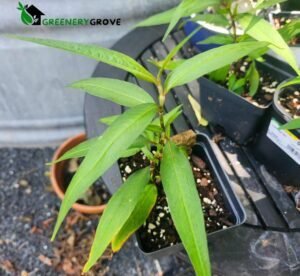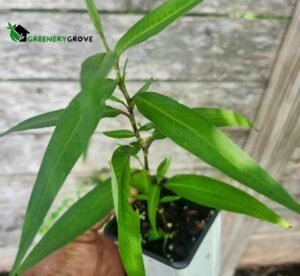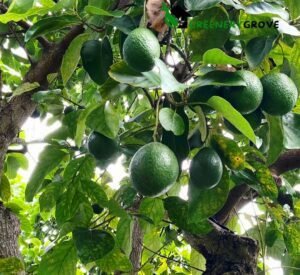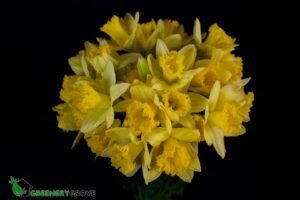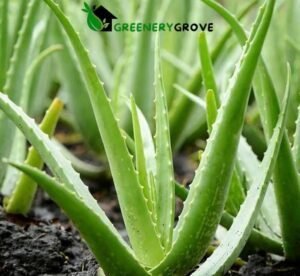
Vietnamese coriander, known scientifically as Persicaria odorata or Polygonum odoratum, is an aromatic herb that has become a staple in Southeast Asian cuisine. This leafy green plant is prized for its distinct flavor and aroma, adding a unique dimension to various diWhile it may share a name with the more commonly known cilantro or coriander, Vietnamese coriander is a separate plant species with its own unique characteristics. In this article, we will delve into the fascinating world of Vietnamese coriander, exploring its origins, culinary uses, cultivation, and beneficial properties.
Origins and Historical Significance
Vietnamese coriander is native to Southeast Asia, particularly in countries like Vietnam, Thailand, Laos, and Cambodia. It has been an integral part of the region’s culinary traditions for centuries, with historical records indicating its use dating back to ancient times. The plant’s Vietnamese name, “rau răm,” reflects its deep-rooted cultural significance.
Culinary Traditions
In Vietnamese cuisine, coriander leaves are widely used to add a distinct flavor and aroma to various dishes, such as soups, stews, salads, and marinades. The plant’s pungent yet refreshing taste is often described as a combination of cilantro and citrus, with a hint of pepper. Its unique flavor profile has made it an indispensable ingredient in many traditional Vietnamese recipes, including the famous Vietnamese noodle soup, “phở.”
Culinary Uses and Dishes
Vietnamese coriander is highly versatile and can be used in a variety of ways in the kitchen. Here are some common culinary applications:
Fresh Leaves
The fresh leaves of Vietnamese coriander are commonly used as a garnish or added to dishes towards the end of cooking to preserve their aromatic qualities. They are often used in salads, soups, stir-fries, and marinades, imparting a distinctive flavor and aroma.
Dried Leaves
While fresh leaves are preferred, dried Vietnamese coriander leaves can also be used in cooking. They are often used in curry pastes, marinades, and dry rubs, providing a concentrated flavor punch.
Examples of Dishes
- Phở (Vietnamese noodle soup)
- Gỏi cuốn (Vietnamese fresh spring rolls)
- Bún chả (Vietnamese grilled pork with noodles)
- Gà xào rau răm (Chicken stir-fry with Vietnamese coriander)
- Canh chua (Vietnamese sweet and sour soup)
Cultivation and Growing
Vietnamese coriander is relatively easy to grow, making it an attractive option for home gardeners and urban farmers. Here are some key aspects of cultivating this aromatic herb:
Growing Conditions
Vietnamese coriander thrives in warm and humid climates, with temperatures ranging from 68°F to 86°F (20°C to 30°C). It prefers well-draining soil and partial shade, as direct sunlight can cause the leaves to become bitter. Normal watering is fundamental, however the dirt ought not be waterlogged.
Propagation
Vietnamese coriander can be propagated from seeds or stem cuttings. Sowing seeds directly in the soil or starting them in seed trays is a common method. Stem cuttings can also be rooted in water or a well-draining potting mix.
Harvesting and Storage
The leaves of Vietnamese coriander can be harvested as needed, with regular pruning encouraging bushy growth. For optimal flavor, it’s best to harvest the leaves in the morning or evening hours. Fresh leaves can be stored in the refrigerator for a few days, wrapped in a damp paper towel or placed in a plastic bag. Dried leaves can be stored in an airtight container for several months.
Nutritional Benefits and Medicinal Uses
In addition to its culinary applications, Vietnamese coriander offers several nutritional and potential medicinal benefits:
Nutritional Profile
Vietnamese coriander is a good source of vitamins A, C, and K, as well as minerals like iron, calcium, and magnesium. It likewise contains cancer prevention agents and mixtures that might have calming properties.
Traditional Medicinal Uses
In traditional Southeast Asian medicine, Vietnamese coriander has been used to treat various ailments, such as indigestion, fever, and skin conditions. However, more research is needed to validate these traditional uses scientifically.
Comparison to Other Herbs
While Vietnamese coriander may share some similarities with other herbs, it has its own unique characteristics that set it apart:
| Herb | Flavor Profile | Appearance | Common Uses |
| Vietnamese Coriander | Pungent, citrusy, with a hint of pepper | Bright green leaves with a lanceolate shape | Vietnamese cuisine, soups, salads, marinades |
| Cilantro/Coriander | Bright, citrusy, with a slightly soapy aroma | Flat, delicate leaves with a distinct aroma | Mexican, Indian, and Middle Eastern cuisines, salsas, chutneys |
| Thai Basil | Sweet, anise-like, with a hint of licorice | Sturdy stems with green or purple leaves | Thai cuisine, curries, stir-fries, salads |
| Mint | Cool, refreshing, with a slightly sweet and bitter undertone | Bright green, pointed leaves with a distinct aroma | Teas, cocktails, salads, sauces, desserts |
FAQ (Frequently Asked Questions)
What is the difference between Vietnamese coriander and cilantro/coriander?
While they share a similar name, Vietnamese coriander (Persicaria odorata) and cilantro/coriander (Coriandrum sativum) are two distinct plants with different flavor profiles and botanical characteristics. Vietnamese coriander has a unique flavor that combines elements of cilantro, citrus, and pepper, while cilantro has a more pronounced citrusy and slightly soapy aroma.
Can Vietnamese coriander be grown indoors?
Yes, Vietnamese coriander can be grown indoors, making it a great option for urban gardeners or those with limited outdoor space. It can be grown in containers or hydroponic systems, as long as it receives adequate light, humidity, and proper watering.
How do I prevent Vietnamese coriander from becoming bitter?
Vietnamese coriander can develop a bitter taste if exposed to excessive direct sunlight or heat. To prevent bitterness, grow the plant in partial shade and avoid excessive heat exposure. Additionally, regular harvesting of the leaves can help maintain their flavor.
Can Vietnamese coriander be used as a substitute for cilantro?
While Vietnamese coriander and cilantro have distinct flavors, they can be used as substitutes for each other in some recipes, especially in Southeast Asian dishes. However, keep in mind that the flavors will not be identical, and adjustments may be necessary to accommodate the unique taste of Vietnamese coriander.
Conclusion
Vietnamese coriander is a truly remarkable herb that adds a distinct and vibrant flavor to Southeast Asian cuisine. Its unique aroma and taste have made it an indispensable ingredient in many traditional Vietnamese dishes, such as phở and gỏi cuốn. Beyond its culinary applications, Vietnamese coriander also offers potential nutritional and medicinal benefits, making it a versatile and valuable addition to any herb garden or kitchen.
Whether you’re a passionate home cook, a culinary enthusiast, or simply someone who appreciates the diversity of global flavors, exploring the world of Vietnamese coriander is a journey worth taking. So, why not add this aromatic herb to your repertoire and experience the richness and complexity it can bring to your dishes? Embrace the vibrant flavors of Southeast Asia, and let Vietnamese coriander transport your taste buds to a world of culinary delights.

